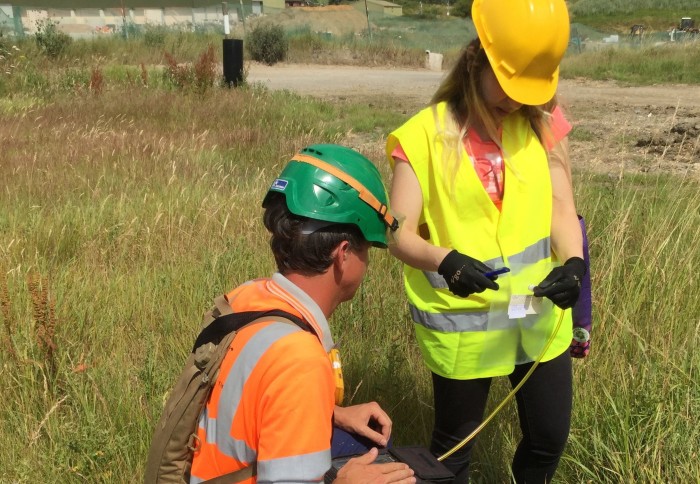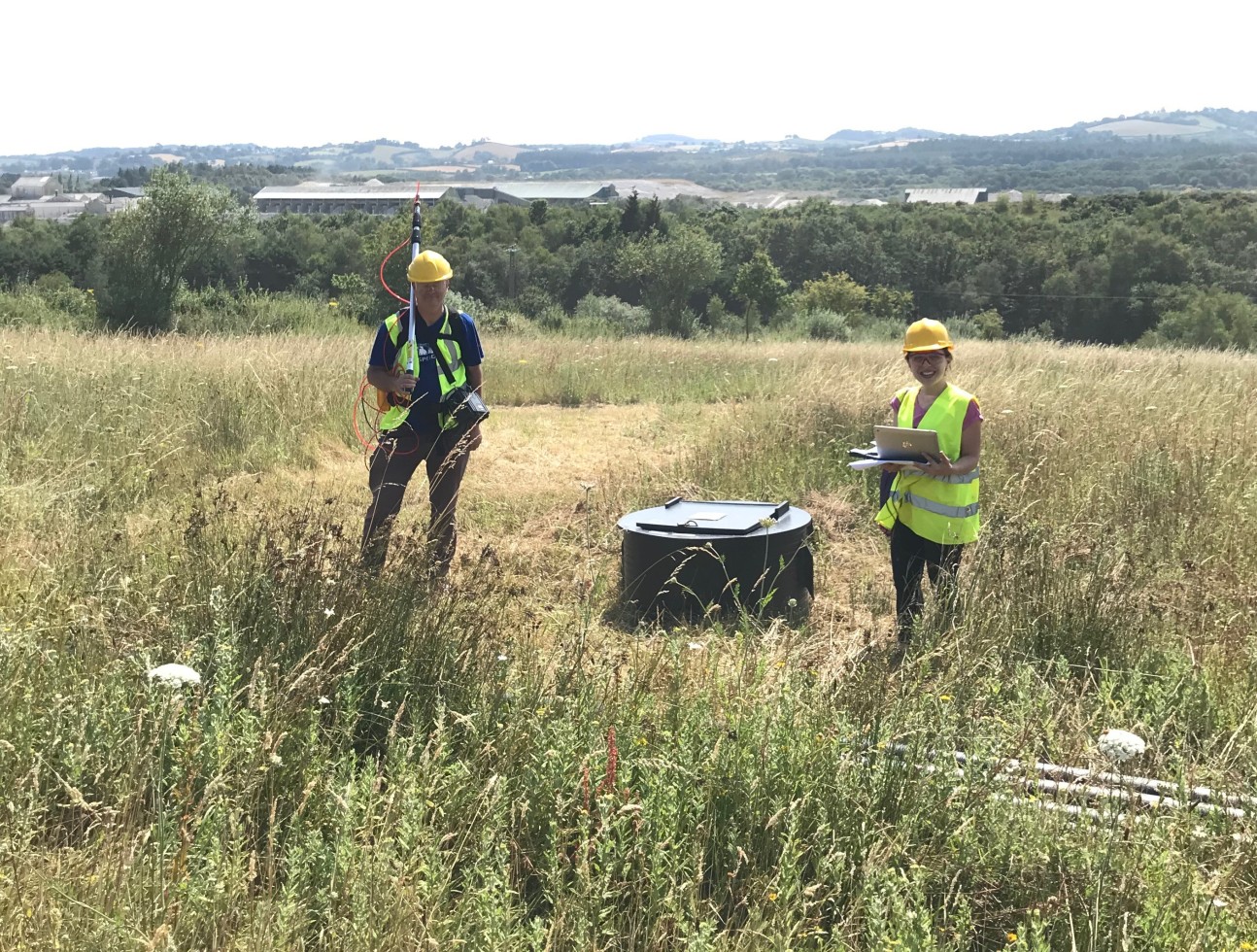
Measuring methane using mobile instruments

We spoke to Semra Bakkaloglu about her PhD on methane emissions from waste sources in Europe.
What was your PhD about?
My PhD, based at Royal Holloway University of London (RHUL), was about isotopic characterisation of methane emissions from waste sources in Europe, especially the UK. Methane (chemical, CH4) has carbon and hydrogen isotopes, such as Carbon-12, Carbon-13 and Carbon-14. The ratio of Carbon 13 to Carbon 12 isotopes tells us a lot about where methane originates from, and whether it is from fossil fuels or biological or a pyrogenic source. I visited biogas plants, landfill sites, wastewater and treatment facilities and measured the amount of methane emitted using mobile instruments, such as a cavity ring down spectrometer (CRDS).
We wanted to understand how the waste sources isotopic signature is changing across the country and various waste source in the UK, Turkey and the Netherlands. This data could help us identify sources for emissions and help us gain a better understanding of the isotope data supporting regional and global source attribution modelling.
Why is it important to measure methane at these sources?
First, methane is the second most important greenhouse gas in terms of global warming potential, after CO2. Its concentration is still rising and we need to try to understand the reason behind the variation in atmospheric growth. Measuring the methane emissions from waste sources can provide a better estimation of the contribution of particular waste source type to global emissions.
Also, I believe this study can provide worthwhile information to regulatory bodies that develop waste management strategies. The amount of methane released is different across different waste facilities. For example, at closed landfill sites, methane is oxidised by the bacteria in the topsoil, and this oxidisation is important as it reduces the amount of methane released into the air.

The UK National Atmospheric Emissions Inventory (NAEI 2020) specify the methane oxidation rate as 10% for all types of closed landfill. At closed sites, the oxidisation rate is higher than at open sites. The UK strategy for Net Zero is to move to bio-degradable biogas rather than landfill, and by 2030, the aim is that all food waste be used to produce biogas for energy rather than sending to landfill. It is therefore important to understand which sources produce the least amount of methane and whether different feedstocks make a difference.
Have you had any publications?
Yes, I have an upcoming publication in the April issue of Waste Management on examining emissions from biogas plants in the UK. We found that methane emissions from biogas plants may account for 1.9% of total methane emissions in the UK excluding the sewage sludge biogas plants, which demonstrates us the significance of the biogas plant methane emissions.
Reducing methane leaks from biogas plants to the atmosphere is critical not only because of their contribution of methane to global warming but also with respect to the sustainability of renewable energy production.
Was your PHD part of another project?
Yes, my PhD was funded by a public-private research European Project called MEMO2: MEthane goes MObile – MEasurements and MOdelling. MEMO2 is training scientists to find methane leaks in fossil fuel production and urban infrastructure across Europe. Due to the funding, I was fortunate to be able to travel to the Netherlands, UK and Turkey to collect air samples.
When did your finish your PhD?
In December, I submitted my PhD thesis. I did my viva on the 16th of February.
Congratulations on your viva. How did you prepare for it?
My VIVA lasted for around two and a half hours. Even though I was asked a few tough questions my examiners were very friendly.
I'd also like to thank my supervisors, Dave Lowry and Rebecca Fisher for all their help!
To prepare, I’d recommend you:
- Re-read your thesis and follow up the relevant recent papers published after submitting the thesis.
- Understand the big picture behind your research.
- Remember to enjoy the viva! This is your chance to show and discuss the topic that you are an expert.
How did you feel about the viva was over?
I can’t really explain how I felt the moment that my viva was over, but I definitely felt relaxed like a huge weight had been lifted off my shoulders.
What do you hope to achieve in the future?
I am so happy and grateful to be part of the Sustainable Gas Institute. I am currently working with Jasmin Cooper and Luke Dubey on the understanding hydrogen emissions from the hydrogen supply chain and also on methane emission from biomethane supply chain. My long-term aim is to be a part of a committee to lead the world in the climate change policy.
Article text (excluding photos or graphics) © Imperial College London.
Photos and graphics subject to third party copyright used with permission or © Imperial College London.
Reporter

Zara Qadir
Department of Earth Science & Engineering

Contact details
Email: press.office@imperial.ac.uk
Show all stories by this author



